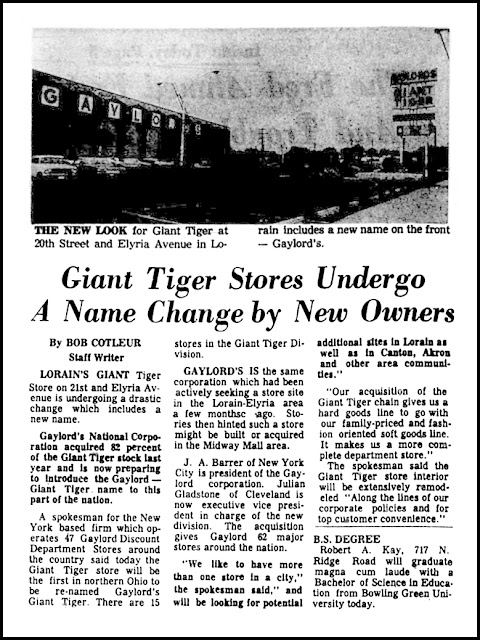Well, it was 94 years ago today that Lorain suffered its worst disaster – the 1924 tornado that claimed 78 lives and leveled much of the city.
The tornado’s horrible aftermath, however, brought out the best in the city and its residents as they quickly rebuilt the town – and their lives.
In observance of this infamous anniversary, here’s a well-written, late-1950s perspective of the tragedy by
Jack LaVriha. It appeared in the
Lorain Journal on June 28, 1958.
****
Tornado Dealt Tragic Blow
Here 34 Years Ago Today
By JACK LaVRIHA
Although most of the physical scars have been erased, many memories still remain of the disastrous and tragic tornado which swept Lorain 34 years ago today.
There are scores of men and women in and around Lorain who will recall the horror of that Saturday afternoon on June 28, 1924, when a whirling cloud of darkness enveloped the city.
The tornado swept over the north end of the city shortly after 5 p.m. and in less than two minutes took 78 lives, injured more than 1,000 persons and did property damage estimated at more than $25 million.
The tornado struck without warning after an exceedingly hot and sultry day. The terrific wind was accompanied by a heavy rain.
For more than an hour after the disaster tornado struck, Lorain lay stunned from the worst disaster in its history.
All public transportation was knocked out with street railway and railroad tracks twisted and wrecked. Electric power and gas plants were out of commission.
And it was impossible to communicate with the outside world because telephone and telegraph wires were down.
More than 1,500 homes were demolished, approximately 250 business properties were hit, nine churches were destroyed or extensively damaged, schools in the northern part of the city were damaged and industrial properties received heavy loss.
There were scores of dead, injured and dying in the wreckage and streets were filled with wrecked automobiles and debris of all sorts.
When darkness fell over the desolate community, word got out to adjoining areas concerning the catastrophe.
Immediately, an invasion of the city was made by doctors, nurses, ambulances, Red Cross and other volunteer workers.
The injured were taken to St. Joseph Hospital, hospitals in surrounding communities and to several Cleveland hospitals.
Lorain High School was converted into a morgue where bodies were taken for identification.
It took more than three months before the last of the communication lines was rebuilt and weeks before public transportation was resumed.
The tornado was followed by one of the biggest construction booms in Lorain's history. In many instances finer structures went up to replace those which were destroyed by the twister.
The scars of the tornado have been erased and a greater Lorain has arisen from the ruins left in the wake of the city's greatest catastrophe – which never will be forgotten.




















































